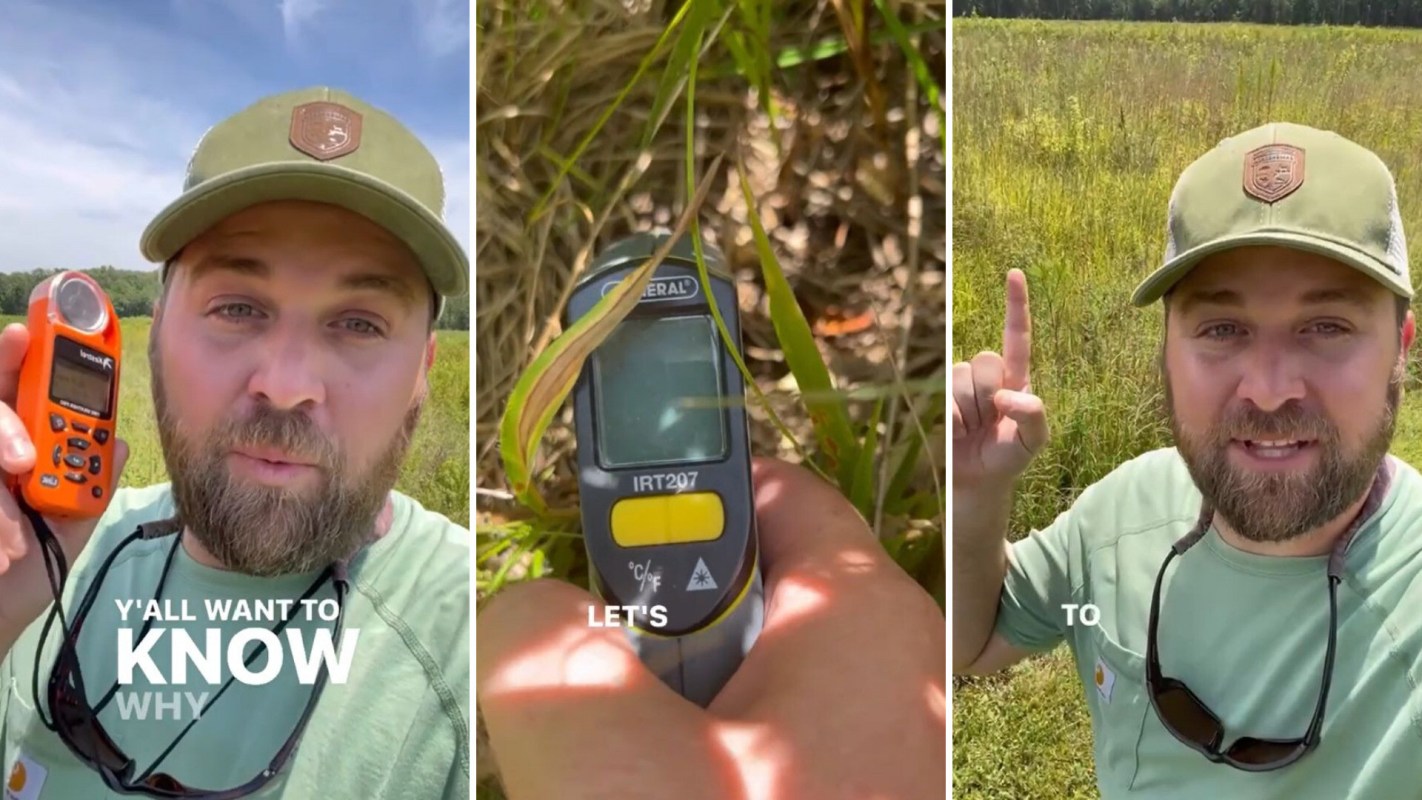When it comes to sweltering temperatures in the U.S., there's a surprising factor contributing to the problem: lawns.
As sunlight hits the earth, the material the light lands on makes a big difference in what happens to it. For example, bright polar ice reflects most light, cooling the planet, while pavement and roofs absorb sunlight and release heat into their immediate areas.
Lawns are much better than asphalt at keeping their patch of ground cool, but they aren't the best option. TikToker Kyle Lybarger (@nativeplanttok) explained the issue in a video on TikTok this August.
@nativeplanttok Even as a forester I'm so tired of the tree planting campaigns. If you truly believe there's a problem let's use some common sense. Here's how ecosystems have changed.. we have more trees than ever, while we've lost 99.9% of grasslands, we have 40 million acres of mowed grass. #nativehabitatproject #ecosystems #climate #biodiversitycrisis #planttrees #grasslands #prairies ♬ original sound - Kyle Lybarger
"Y'all wanna know why it's so hot outside? I'm about to show you," says Lybarger. He then measured the soil temperature in several different locations.
"It's 94 degrees, and I'm out here standing in the middle of a tall grass prairie," he says, then showing that the soil temperature is 80 degrees — 14 degrees cooler than the air.
"And this is your average lawn, made up of non-native turf grasses and frequently mowed. Soil temp: 113," he says. That means the ground is almost 20 degrees warmer than the air and 33 degrees hotter than the grassland. Concrete, by comparison, rang in at 131 degrees.
It's evident that grasslands have more cooling power than lawns, but even that isn't the whole story. Lybarger also showed the soil temperature in a closed-canopy forest, which was the lowest yet at 67 degrees.
"So you can see why it'd be tempting for humans to plant forest in places that weren't historically forested," Lybarger says.
In the video description, however, he called out the problem with that approach: "If you truly believe there's a problem let's use some common sense. Here's how ecosystems have changed.. we have more trees than ever, while we've lost 99.9% of grasslands."
According to the Alabama resident, a savannah, which is a mix of forests and grasslands, is ideal for keeping us cool and is what historically covered more of the U.S.
Grasslands are good for more than just regulating the temperature. Lybarger says: "Grasslands are some of our most diverse ecosystems, and they're more reliable carbon sinks than even forests are."
That means they help remove heat-trapping carbon pollution from the air and store it in the plants themselves.
"The good news is, it doesn't take as long to get grasslands back," Lybarger concluded. "You can have something that resembles this in a year's time."
Join our free newsletter for cool news and cool tips that make it easy to help yourself while helping the planet.









